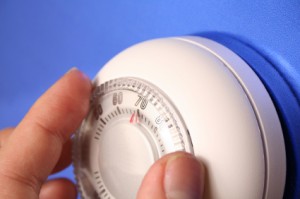 If you are planning on installing an air conditioner before the weather heats up, it is important to have the air ducts cleaned before the air conditioner is installed. Having the air ducts cleaned before the air conditioning is installed will prevent numerous avoidable problems from occurring.
If you are planning on installing an air conditioner before the weather heats up, it is important to have the air ducts cleaned before the air conditioner is installed. Having the air ducts cleaned before the air conditioning is installed will prevent numerous avoidable problems from occurring.
Prevent a Dust Out
When central air conditioners are installed, numerous modifications are made to the furnace cabinet and supply trunk line. Trunk lines are the main intake and distribution lines of an HVAC system. Because of the volume of air that is circulated through trunk lines, they are often the dirtiest points of a ventilation system. Modifications to the trunk lines disrupt and loosen debris on the walls of the trunk lines. If the air duct are not cleaned prior to installation there is a high probability of drawing debris into your newly installed HVAC components or blowing the loosened dust and debris within your home.
Prevent Fouled Air Conditioning Coils
Home central air conditioning systems draw air from the return air vents; and blow the air through evaporative coils located above the furnace to chill the air. To a large degree, the energy efficiency of an air conditioner is dependent on the cleanliness of the evaporative coil. When evaporative coils become fouled, they cause a number of problems:
- Decrease heat transfer: Evaporative coils are made of tiny fins designed to absorb the heat from the air, when dirt or debris enters the coil fins, it acts as an insulator preventing efficient heat transfer.
- Decrease airflow: Debris can build within the coil face preventing air to freely flow through the coil. Fouled air conditioning coils negatively affect your HVAC system during the heating season as well.
- Clogged drain pans: As evaporative air conditioner coils absorb heat from the air, they condensate moisture which flows from the air conditioning system through a drain pan. Moisture and debris clogs the drain of the air conditioner.
- Coil Freeze: Loosened debris within the air ducts causes air filters to load prematurely, and fouls evaporative air conditioner coils. Coils typically freeze and fail due to low air flow.
Plan and Prepare
When planning your air conditioner installation, budget air duct cleaning in your installation cost. Coordinate the air duct cleaning to be performed before the installation of the air conditioner. Clean air ducts will provide numerous long term benefits.

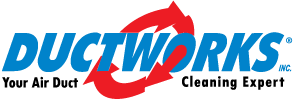
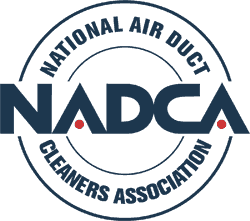 For decades the National Air Duct Cleaners Association (NADCA), has been educating consumers on the process and benefits of air duct cleaning. Currently there is research study underway to measure the correlation between energy pressure drop and energy savings.
For decades the National Air Duct Cleaners Association (NADCA), has been educating consumers on the process and benefits of air duct cleaning. Currently there is research study underway to measure the correlation between energy pressure drop and energy savings. Air sealing the building envelope is one of the most critical features of an energy efficient home. As new homes grow increasingly tighter to achieve ever higher levels of energy efficiency, the potential for indoor air pollution also increases.
Air sealing the building envelope is one of the most critical features of an energy efficient home. As new homes grow increasingly tighter to achieve ever higher levels of energy efficiency, the potential for indoor air pollution also increases. Ensuring good indoor air quality is easy once you have an understanding of the components that effect your homes environment. Using the steps below, perform a quick checklist to improve your indoor quality.
Ensuring good indoor air quality is easy once you have an understanding of the components that effect your homes environment. Using the steps below, perform a quick checklist to improve your indoor quality. Qualified air duct cleaning contractors employ a variety of different power, pneumatic and hand tools when cleaning air ducts. While there are numerous types of equipment used in the air duct cleaning industry, the job site to a large extent, defines what air duct cleaning tools will be used.
Qualified air duct cleaning contractors employ a variety of different power, pneumatic and hand tools when cleaning air ducts. While there are numerous types of equipment used in the air duct cleaning industry, the job site to a large extent, defines what air duct cleaning tools will be used.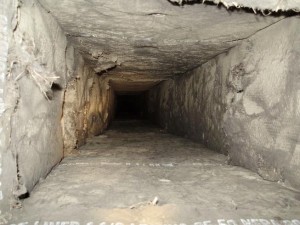 Most commercial air duct systems are internally lined with fiberglass duct liners. Deteriorating fiberglass duct liner is a very common cause for indoor air quality complaints and adverse health effects.
Most commercial air duct systems are internally lined with fiberglass duct liners. Deteriorating fiberglass duct liner is a very common cause for indoor air quality complaints and adverse health effects.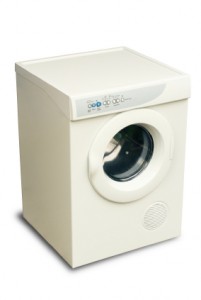 A clothes dryer works by forcing hot air through a turning drum. Wet clothes placed in the drum are then dried by the moving hot air. It is possible for a full load of wet clothes to contain as much as one and a half gallons of water from a typical load of laundry. Lint is created from the clothes as the water is removed and the clothes dry. Overtime as air passes through this exhaust line the lint collects in the screws, bends and elbows and walls of the air duct.
A clothes dryer works by forcing hot air through a turning drum. Wet clothes placed in the drum are then dried by the moving hot air. It is possible for a full load of wet clothes to contain as much as one and a half gallons of water from a typical load of laundry. Lint is created from the clothes as the water is removed and the clothes dry. Overtime as air passes through this exhaust line the lint collects in the screws, bends and elbows and walls of the air duct.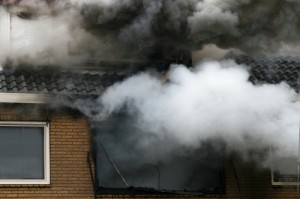 An air duct system is very efficient at spreading smoke. When a fire occurs, the entire HVAC system will be contaminated, to a lesser or greater degree. It is likely that the air duct system will distribute smoke damage well beyond the area of the fire.
An air duct system is very efficient at spreading smoke. When a fire occurs, the entire HVAC system will be contaminated, to a lesser or greater degree. It is likely that the air duct system will distribute smoke damage well beyond the area of the fire.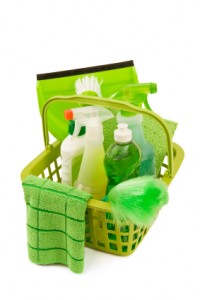 Green air duct cleaners employ advanced methods and materials specifically for green cleaning. They make an extra effort to not allow any dust to escape outdoors or indoors, and only use natural cleaning products.
Green air duct cleaners employ advanced methods and materials specifically for green cleaning. They make an extra effort to not allow any dust to escape outdoors or indoors, and only use natural cleaning products.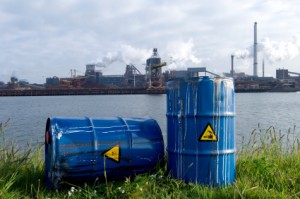 A host of different biological, gas, and particulate pollutants can affect the indoor air quality. The types of contaminants and the amounts that are suspended in the air determine air quality.
A host of different biological, gas, and particulate pollutants can affect the indoor air quality. The types of contaminants and the amounts that are suspended in the air determine air quality.